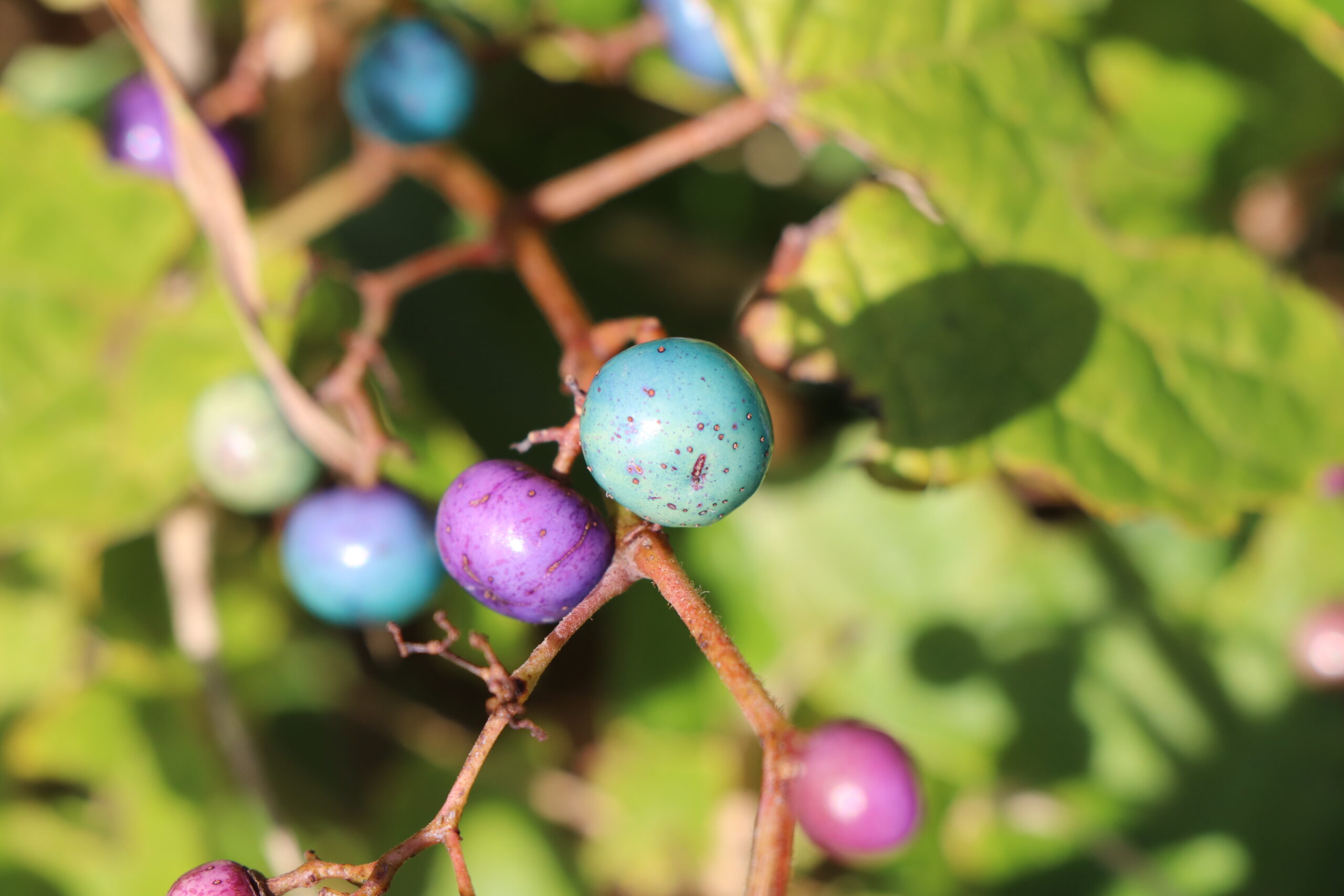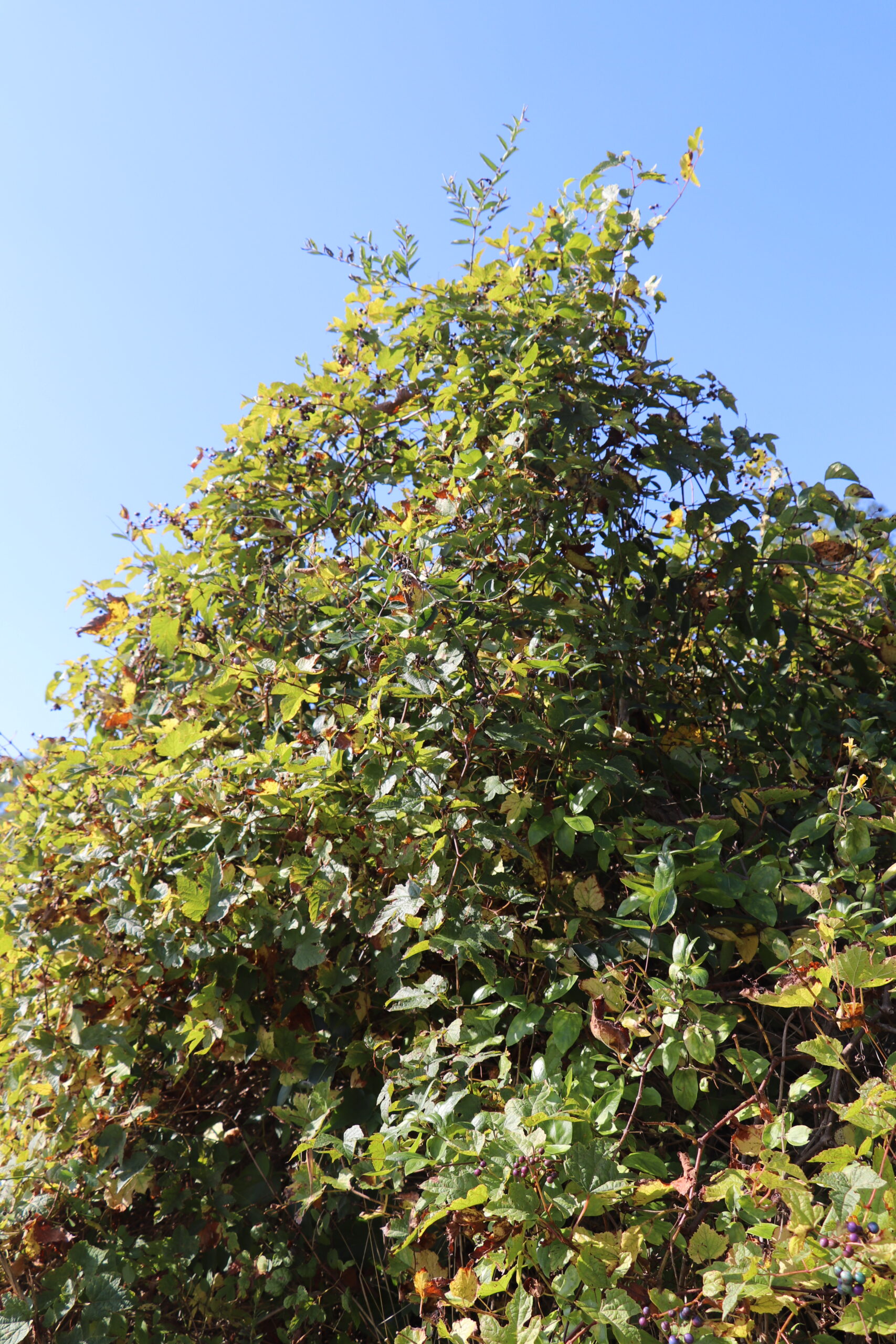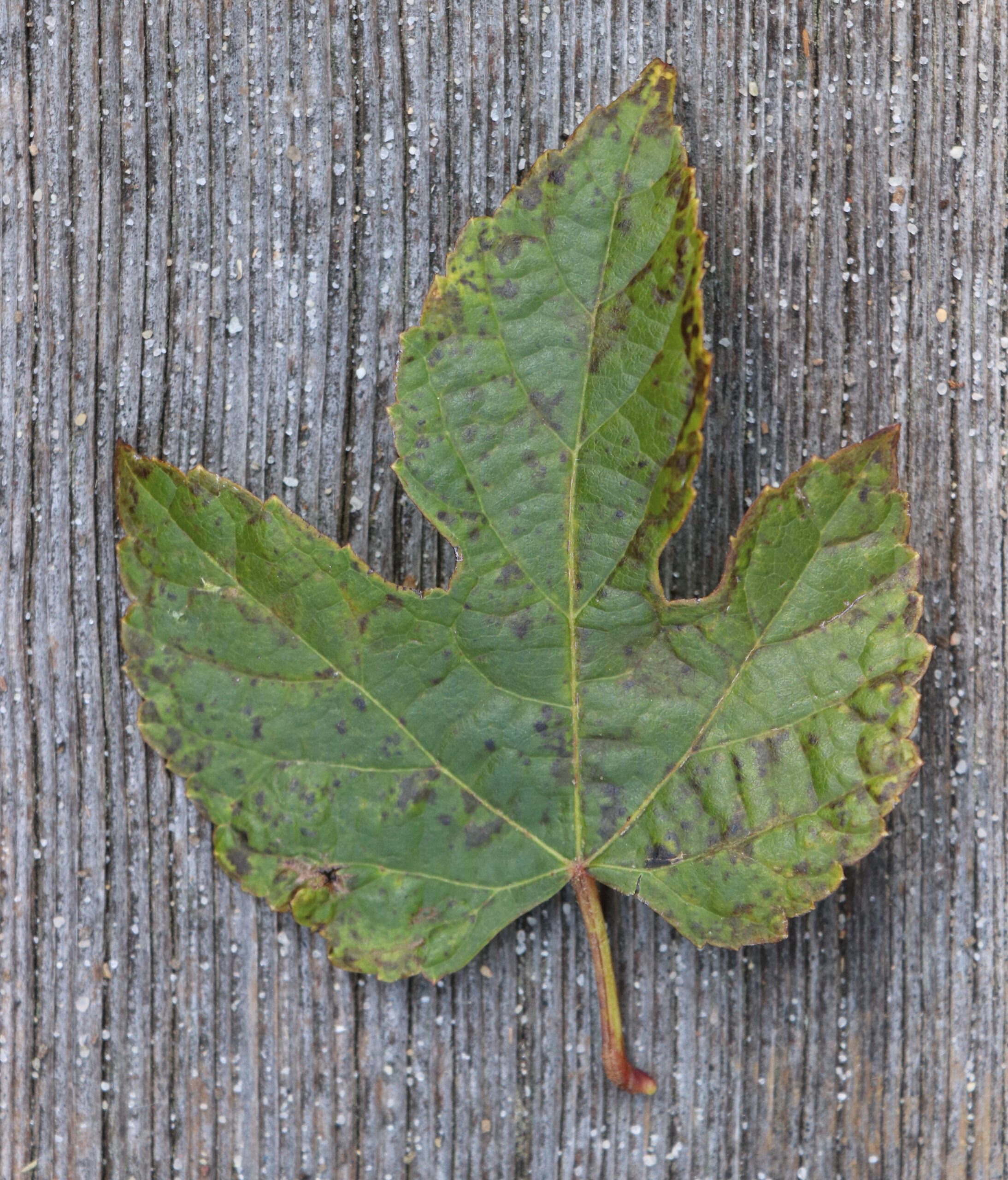Plant Spotlight: Porcelain-Berry



Porcelain-berry is a deciduous, woody, perennial vine. Sharing a family with the native grapevine, family Vitaceae, porcelain-berry is a prolific climber that quickly covers and shades out our native plants.
Origin. A native to northeast Asia, this plant was imported and introduced to the United States in the 1870s as an ornamental and landscape plant. Hardy in USDA zones 5 to 9, this perennial plant has spread from Maine to Mississippi and as far west as Minnesota. Porcelain berry is a vigorous and aggressive invader of open spaces and wooded habitats. It grows well in most soils, especially pond margins, stream banks, forest edges, and thickets. It prefers full sun to partial shade and where it is not permanently wet. Birds are attracted to the fruit and spread the seeds.
Characteristics. Porcelain-berry utilizes tendrils to help reach and climb over obstacles and plants to reach the sunlight. The leaves are alternate, broadly ovate with a heart-shaped base, palmately 3-5 lobed or more deeply dissected, and have coarsely toothed margins. In ideal growing conditions, plants can grow from 10 to 25 feet long in a single season. From June through August, the vine develops groups of white flowers, which turn into berries of various colors in September and October. Beginning as white fruits, they turn yellow, lilac, green, or turquoise. It forms dense mats that shade and crowd out native vegetation, making it challenging to discover what, if anything, grows beneath it. It can also climb trees, reaching up to 20 feet in height.
Porcelain-Berry v. Grape Vine. Identification can be challenging as this plant shares many characteristics similar to our native grape vine. Some differences between the two are as follows: the bark of native grapes shreds or peels; porcelain berry does not. The center of a native grape’s stem is brown; porcelain-berry is white. Native grape flowers and fruit drop from the vine; Porcelain-berry flowers and fruit are held above the stem, even when the stem is drooping. Grapevine produces dark purple to black fruit; porcelain-berry produces a light purple or lilac berry. The leaves vary as well. Grape leaves are the shape of a duck-foot; porcelain berry leaves have defined lobes and toothed margins.
Management. Management of this invasive can be challenging due to its prolific growing and climbing capabilities in ideal conditions. There are two main management techniques: physical and chemical. Hand-pulling vines in the fall or spring will prevent flower buds from forming the following season. If possible, the plant should be pulled before the flowering and fruiting season to mitigate spread. Birds and mammals eat these, but they are poisonous to humans. Seeds are spread most often by birds, who eat the berries and transport the seeds to new areas. Manual cutting should occur regularly to cut back new growth repeatedly. Plants can be cut to just above ground height and monitored. The chemical option works in combination with manual and mechanical removal methods. Many practitioners have successfully used systemic herbicides like triclopyr and glyphosate. When using these chemicals it is critically important to utilize the proper quantity and for it to be applied safely, it is recommended to hire a certified pesticide or herbicide applicator for jobs that require the use of chemical treatment.
Sources / Further Reading
https://www.invasive.org/weedcd/pdfs/wgw/porcelainberry.pdf
https://www.massaudubon.org/nature-wildlife/invasive-plants-in-massachusetts/porcelain-berry
https://extension.psu.edu/porcelain-berry-an-unwanted-beauty
https://vnps.org/unwanted-unloved-porcelain-berry/
https://extension.umd.edu/resource/invasives-your-woodland-porcelain-berry/
